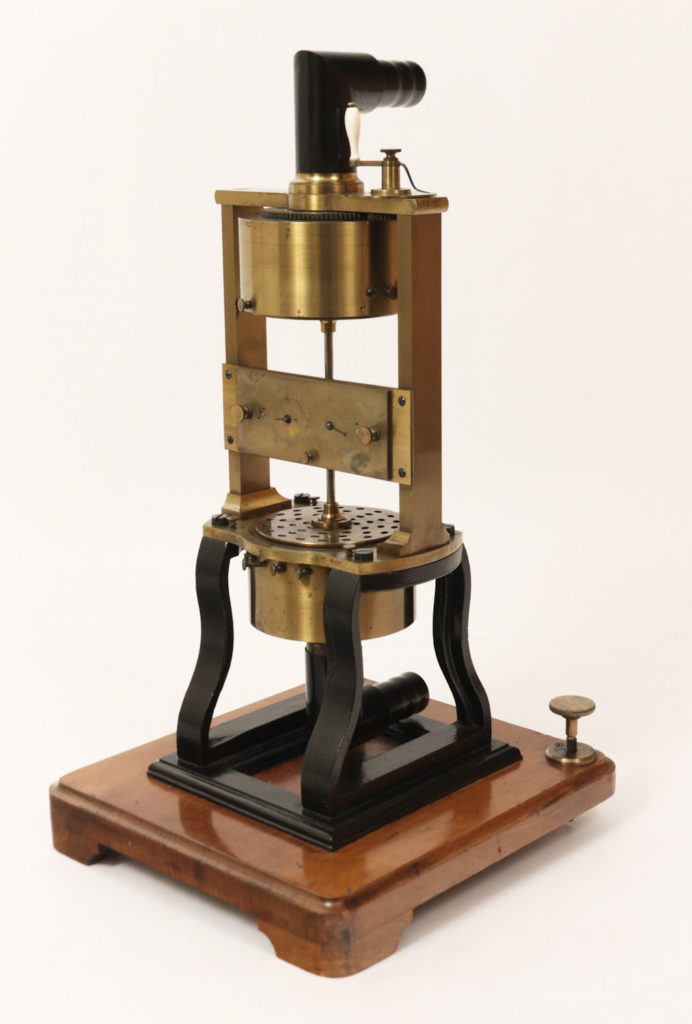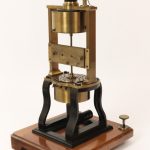Artefacts
Double Siren
Double Siren
(Accession Number: 2013.ph.607)
Dial on the left is marked with numbers from 0 to 100 in intervals of 10
Dial on the right is marked with numbers from 0 to 25 in intervals of 5
Three of the four knobs on the top cylinder are marked "12", "15", and "16"
The four knobs on the bottom cylinder are marked "18", "8", "12", and "10"
Stamp on the top of the framework: "RUDOLPH KOENIG A PARIS"
On the bottom of the wooden base is written "NO 2" in pencil
Dimensions: Height =46.5, Width = 25, Length= 26
Condition: Very good: the piece is fully functional. Some minor tarnishing on the brass.
The double siren was one of Koenig’s more popular instruments. It consisted of two “polyphonic” or “multivoiced” sirens with more than one series of holes, and was an invention of the German physicist and former teacher of Hermann von Helmholtz, Heinrich Wilhelm Dove (1803–1879). It produced several pure tones simultaneously, in musical chords, and under greater pressure. It was ideal for demonstrating interference effects (when sound waves combined to amplify or diminish each other) and combination tones. [Pantalony 2009, 184-185]
Description: This siren consists of two wide brass cylindrical chambers, one above the other, each covered with a rotating perforated disk and supported in a brass and iron framework set on a wooden base. To the top of the top cylinder and the bottom of the lower cylinder are affixed angled pipes. The two chambers are connected to one another at their centres by a steel rod. On the sides of each cylinder are four brass knobs affixed to rods that may be pulled in and out. Between these two chambers is brass case with two dials on the front, each connected to a gear in the back. A set of interlocked gears on the top of the upper cylinder is attached to a small handle on the top of the framework.
Function: This piece was used primarily in demonstration rather than experiment. It shows the effects of pure tones produced simultaneously by pressurized air, including interference and combination tones.
Historical Notes: With the help of the Berlin mechanic, Sauerwald, Helmholtz created this instrument in 1855-56. It was later produced by the Paris-based instrument maker Rudolph Koenig. The double siren was one of Koenig’s more popular instruments. It consisted of two polyphonic or multivoiced sirens with more than one series of holes, and was an invention of the German physicist and former teacher of Hermann von Helmholtz, Heinrich Wilhelm Dove (1803-1879). It produced several pure tones simultaneously, in musical chords, and under greater pressure. It was ideal for demonstrating interference effects (when sound waves combined to amplify or diminish each other) and combination tones). [Pantalony 2009, 184-185]
https://www.physics.utoronto.ca/
© 2015 – 2024 Humboldt-Universität zu Berlin












